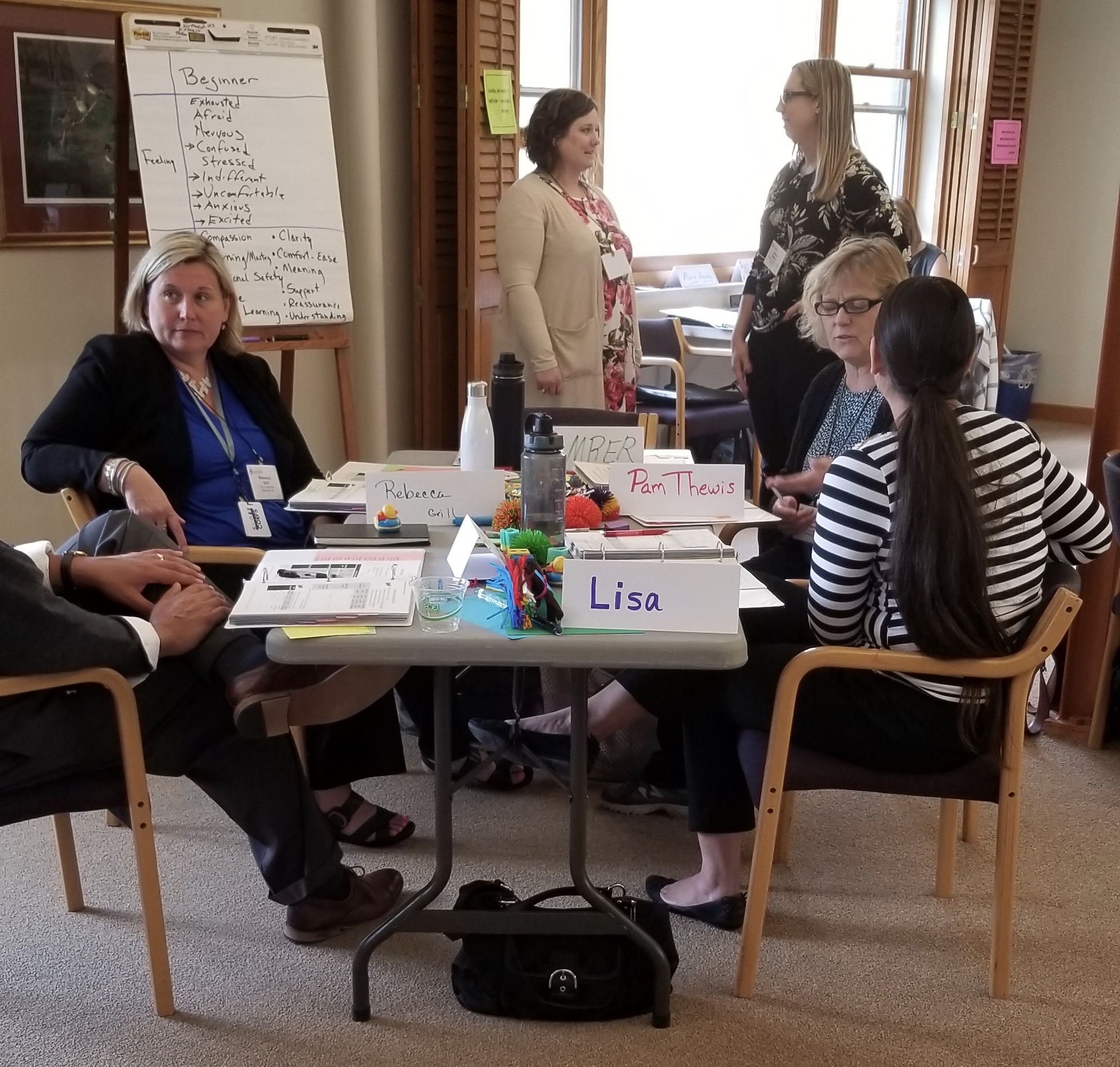“If everyone is moving forward together, then success takes care of itself.” Henry Ford
All professional development methods are intended to increase the participants’ skills. Peer learning groups do this, and they also give the participants the opportunity to: be self-directed learners, accomplish the complete learning cycle, and enjoy a safe collaborative space for conversation and exploration.
Self-Directed Learners
According to J. Muller, in his article, ‘How Adults Learn,” the purpose of adult education is to create self-directed learners. In the Peer Learning Group Model designed by The Peer Learning Institute, the participants take charge of their learning process. They convene a peer learning group when faced with a current workplace challenge. They rely on written materials and each other to guide their discussion, practice, reflection, and report. There is no facilitator. They ultimately hold each other accountable for applying their new skills.
Adult Learning Cycle
Muller describes adult learning as “a continuous process of investigation and exploration, followed by action grounded in this exploration, followed by reflection on this action, leading to further investigation.”
“…Learners become acquainted with skills, apply these in real life settings, redefine how these skills may be altered by context, re-apply these in other settings and so on.”
His statement perfectly describes the Peer Learning Group Model. The participants learn new skills, apply these skills on the job, reflect and report on that experience, and adjust their skills to fit their situation and organizational culture.
Social Interaction
Janet Lear describes the social nature of learning in her book, Community in the Online Environment, as “an interactive process between and/or among students, where individuals share experiences and knowledge to enhance or broaden another’s understanding and knowledge.”
The interactive and collaborative nature of the peer learning groups enable participants from different functional areas to learn from and with their peers. Because there is no outside facilitator, they can have open, honest, and confidential discussions about their successes, disappointments, issues, and concerns. This opens lines of communication and lowers siloes.
A Positive Difference
The goal of workplace professional development should be to create self-directed learners whose learning process has an immediate positive impact on the organization. Their learning success should contribute to organizational success.
The Peer Learning Group Model provides the framework to accomplish this goal.
If you would like more information, contact Deborah Laurel at 608-219-3594.
Question: Do you agree that the goal of adult education is to create self-directed learners?
#adulteducation #learningcycle #peerlearninggroups





